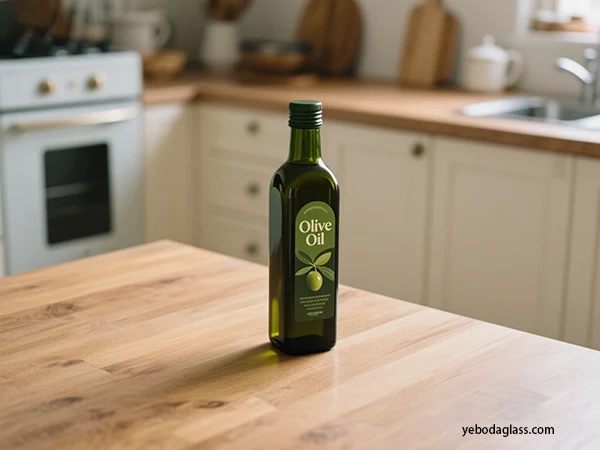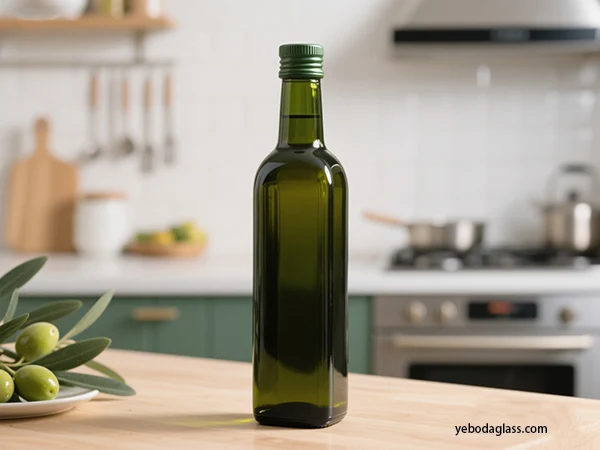導入
This report has thoroughly reviewed the sourcing of premium olive oil glass bottles in bulk, considering major variables such as volume requirements, design enhancements, cost factorization, locational characteristics, and quality selection. It suggests approaches to the identification of and procurement from eligible manufacturers and reflects at a high level on the great importance of ensuring alignment between a bottle’s specifications and the brand’s identity in the market. The report also offers the latest suggestions with regard to sustainable sourcing and new manufacturing technologies. In combining these aspects together with strong and resilient supply chains, businesses should be able to source superior quality ガラス瓶 for their products which are attractive, preserved, and contribute valuable brand experience. はい、はい。 olive oil glass bottles are an excellent case study in premium olive oil glass packaging that both balances clarity and durability while remaining airtight—being consistent in quality and eco-friendly production practices, the bottles offer both a functional and sustainable attribute for premium packaging.

Design Specifications and Customizing
The design features of your olive oil glass bottle dictates sourcing feasibility, lead time, and cost. Customizing can represent anything from customizable enhancements to uniquely styled glass bottles that aren’t commonly available in conventional glass bottle sourcing. Yeboda olive oil glass bottles illustrates this customization ability, including UV protected tinted glass, neck finishes with tolerances tighter than ±5mm, and decorative treatments including frosting and embossing, which lets the bottles accomplish both functional preservation and premium brandomics.
Bottle Shape and Capacity
Manufacturers offer a wide array of standard bottle shapes, from classic round designs to modern square profiles [3]. For premium olive oil, unique shapes can enhance shelf appeal and brand identity [1]. The capacity requirement (e.g., 250ml, 500ml, 750ml) will also dictate available mold options or the cost of creating new ones.
Color and Glass Type
While clear glass is common, specialty colors like green and amber are often preferred for olive oil due to their UV-protective properties, which help preserve the oil’s quality and flavor [18][20]. Specialty colors like blue and purple are also available for aesthetic differentiation [1]. The choice of glass type also impacts cost and appearance. Super Flint glass offers superior clarity and a premium look but may limit the use of recycled content [16]. Flint glass is also clear but may have a slight green tint. Amber glass provides UV protection and is often slightly more expensive than clear glass due to added minerals.
Neck Finish and Closures
The neck finish is critical for ensuring compatibility with caps and closures. Standardized finishes like 18-400, 20-410, 24-410, 28-410, 38-430, 45-400, and 53-400 are common. The 38-430 finish, for instance, is often used for controlled, drip-free pouring in the food industry. Custom neck finishes are possible but add complexity and cost.
Cost Analysis and Margin Optimization
Sourcing olive oil glass bottles involves a multi-dimensional cost structure. Key cost components include:
- Raw materials: glass is made from sand, soda ash, and limestone, and energy costs account for almost 30% of production.
- Labor and energy: labor costs depend on location, and energy-intensive operations (ie: furnaces) are very expensive to operate.
- Mold and tooling: Custom molds range from between $5,000 – $50,000 depending on complexity and production needs.
- カスタマイズ: Decorative processes (frosting, embossing, spraying) can add some incremental costs.
Economies of scale/volume: the higher the volume, the more significantly the unit costs can decline (since average initial order volumes can decline by almost 20%-30%).
Cost-Saving Opportunities:
- Utilizing lightweight designs with durable alternatives.
- Including recycled cullet to minimize raw materials and energy.
- Working with manufacturers with bundled opportunities (bottles + closures + labeling).
- Considering sourcing suppliers who are near-shore to reduce freight costs.
By navigating a balance between customization and standardization, brands can maximize cost savings while continuing to provide a premium packaged product.

Geography of the Sourcing Landscape and Risk Analysis
Geography is an important consideration in sourcing olive oil glass bottles because of differences in labor/wage costs, energy prices, raw material availability, logistics infrastructure, and regulatory conditions.
Asia-Pacific
- 原材料コスト: Glass is made principally from sand, soda ash, and limestone, with energy costs accounting for approximately 30% of production .
- Labor & Energy Costs: Labor costs rely on location; energy-intensive manufacturing operations (i.e., furnaces) are costly to operate.
- Molds and Tooling: Custom molds can range in price from $5,000 to over $50,000 depending on complexity and production requirements.
Customization: Decorative processes (frosting, embossing, spraying) add some marginal costs. - Economies of Scale/Volume: the higher the volume, the more unit costs can drop significantly (as average initial order volumes can drop by as much as 20% – 30%).
Cut the Fat, Save the Cash
Go for lightweight bottles, but don’t settle for flimsy stuff—think tough, just not heavy. Why burn through more glass, dough, and electricity when you can toss some recycled cullet in the mix? Seriously, it’s a no-brainer. Partner up with folks who bundle their deals—if your supplier hooks you up with bottles, lids, and labels all in one shot, you can dodge a ton of annoying extra costs. And don’t forget: local-ish suppliers mean you’re not forking over cash just to ship your goods across the globe. Freight costs add up, man. There’s this sweet spot between going wild with customization and sticking with cookie-cutter solutions. If you can toe that line, you’ll keep your product looking top-shelf without bleeding money.
Sourcing Geography & Risk: Don’t Sleep on It
Where your olive oil bottles come from totally matters. Wages, energy bills, how easy it is to get stuff around—all that varies big time by region. Some places are a headache with regulations, others will nickel-and-dime you with transport costs. So, yeah, geography isn’t just a dot on the map—it can make or break your budget.

Quality Assurance Framework and Certification Requirements
Quality and compliance are critical to mitigating risk when sourcing glass bottles for olive oil.
Materials and Safety Requirements
Food-contact certification is a given. Make sure that the bottles comply with FDA (U.S.), EFSA (EU), or CFDA (China) regulations for food safety. This will include a variety of tests for aspects such as heavy metals leaching, thermal resistance, and mechanical stability and performance.
Process Audits and Supplier Qualification
Oh, and don’t even think about skipping factory audits. You want someone checking the furnace isn’t about to explode, that batch records aren’t scribbled on napkins, and the quality systems aren’t just for show. Third-party inspectors like SGS or Bureau Veritas? Worth every penny – they’ll give you the real dirt, not just the “factory tour for visitors” version.
Sustainable Certification
Let’s get real: “Eco-friendly” sells right now. Certifications—ISO 14001, Cradle-to-Cradle, the whole recycled-content deal—get you those green points with buyers. Lots of European suppliers are already bragging about how much recycled cullet goes into their bottles, waving the EU Circular Economy flag like it’s the new rockstar move.
Emerging Trends and Innovative Sourcing Solutions
You want new stuff? This market’s moving FAST—thanks to new tech, everyone chasing “sustainable” everything, and a big hunger from buyers for bottles that don’t just look like every other brand on the olive oil shelf.
Lightweighting and Material Efficiency
Manufacturers are looking for ways to reduce bottle weight while maintaining it durability. This reduces production costs, CO₂ emissions, and shipping costs.
Advanced Decorative Techniques
Advanced decorative techniques, such as laser engraving, digital printing, and hybrid finishes are becoming more common and allow easy customization cost-efficiently at smaller volume size for limited-edition runs. Using such decorations also allows for flexibility in switching markets to large quantity orders easier and to be ready for limited-edition runs faster.
スマートパッケージ統合
The use of QR codes, NFC tags, or RFID technology on bottle labels will become popular for added value and traceability, anti-counterfeiting, and entertainment. For high-end olive, such features provide extra transparency and can make consumers loyal to their brand.

結論
The market is undergoing significant changes for olive oil glass bottles, which are transferring stability mandatory, technological progress and consumer preferences.
- For cost-sensitive wholesale buyers, Asia-Pacific suppliers provide competitive benefits.
- For premium-tainat brands, European manufacturers offer unmatched design and compliance credentials.
- For North American companies, balanced imports with localized solutions ensure supply chain flexibility.
Strategic sourcing should balance cost, adaptation and stability. By implementing rigorous quality assurance structure and taking advantage of emerging innovations, brands can protect premium glass bottles that not only protect the integrity of olive oil, but also increase consumer perception and brand identity. In this scenario, manufacturers like Yeboda explain how both functional and branding demands can be met by combining how the stability, clarity and environment friendly production in olive oil bottles. His example underlines how sourcing decisions directly affect the success of the product in competitive global markets.




